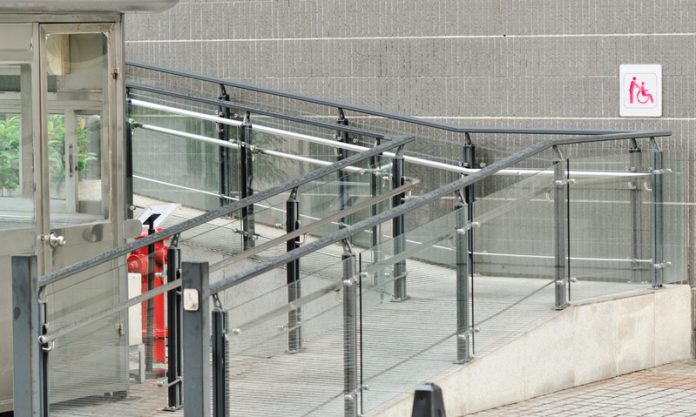Ian Streets of About Access discusses the benefits of access consultants, particularly in the long-term where it costs to put things right
Access issues crop up with many buildings. Whether it’s down to complacency or confusion, the number and prevalence of basic errors in building design is as frustrating as it is avoidable.
Doors which are too narrow or which are squeezed into a tight space, accessible loos which aren’t quite big enough, handrails which just aren’t handy! Get them right first time and everybody is happy. Get them wrong and the costs to fix them will soon mount up. And if in doubt, get an access consultant.
Measuring access
A door should have a clear effective width of 300 mm from the leading edge to the nearest wall to enable wheelchair users to reach and grip the handle. For buildings other than dwellings the door itself should be at least 800 mm wide. Some people might think that’s not enough, others maybe think it’s too much and one or two don’t seem to think at all!
It can be tight, particularly if tables, chairs and other furniture are placed too close to the door, but it’s better than the 667 mm we measured in a door at one property.
Accessible loos should be at least 2200 mm long and laid out in a way which gives people the space they need to manoeuvre their wheelchair or other mobility aids and to use the facilities in comfort, keeping washing and drying fixtures within easy reach.
We studied one which had been considered fine until the builders realised they’d missed out the soil pipe. The builders had followed the plans to the letter, but the designers had omitted that essential feature. The builders added a soil pipe and boxed it in but by doing that after the fact they reduced the length of the room to 2100 mm, thereby rendering the accessible loo rather less accessible.
Simple mistakes
A simple installation with no excuse for getting things wrong is with handrails on stairs. The rail should extend horizontally at the top and bottom of the steps because the level extension indicates to people when they have reached the start or end of a flight of steps. It is also designed to avoid getting caught in clothing, such as sleeves, and some people also find it helpful to be able to take support from the extended handrails as they step on or off the staircase.
Unfortunately we’ve come across many examples of places where the designers haven’t included the extensions. Correcting that isn’t completely straightforward – depending on the style of rail, the space available and the width of the staircase it can be very difficult to add an extension.
There’s no excuse for getting these things wrong so why do we encounter so many problems?
The pitfall of ignorance
One reason is ignorance. That’s not necessarily accompanied by arrogance, it’s just the case that some designers don’t know the requirements because they don’t look at the guidance. Many also overlook the provisions of Approved Document M and it’s possible that some merely assume any problems will be picked up and remedied by Building Control and Approved Inspectors.
Even if that was likely – and we must remember those people have a lot of other things to do – by the time Building Control and Approved Inspectors step in the project will have moved on, and so will the costs.
Access by design
It is up to the designers to get these issues right from the outset because all the basic information is freely available. Then bring in an access consultant to ensure that any problems are identified at the design stage and can be rectified at the earliest opportunity. It is their job to look for and to anticipate any problems and to give the advice which, if adopted, should ensure things run smoothly, so why would you ask anybody else to do that?
Sometimes a tender will require a designer to take on an access consultant to review the final option for a project before they get to the detailed design stage but that doesn’t always happen.
The key to all of this is not to think about how much a project costs or how much you could save in certain areas, think about how much it will cost to fix if you get it wrong.
If you need help improving the accessibility of your organisation or to do more by improving your skills then please get in touch and check out About Accesses website: www.aboutaccess.co.uk.

















